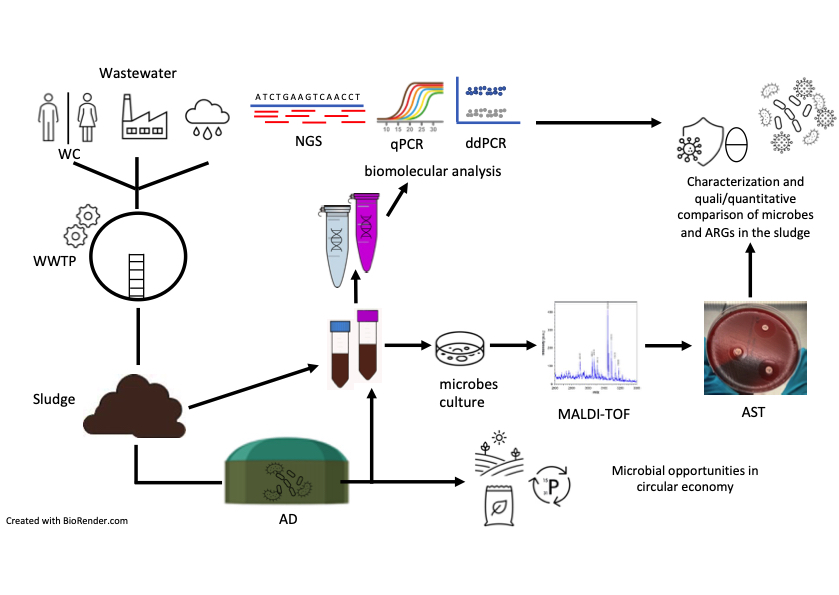Dott.ssa Elena Franchitti
- 505206
- Phd: 37th cycle
- Department of Public Health and Pediatrics
- Matriculation number: 842068
- ORCID: orcid.org/0000-0002-8594-3299

Contacts
- elena.franchitti@unito.it
- Dipartment of Public Health and Pediatrics (DSSPP) - UniTo,
Via Santena 5 bis, Torino, 10126 (TO) - https://phdsustainability.campusnet.unito.it/do/studenti.pl/Show?842068
- VCard contacts
- QRcode contacts
Supervisor
Deborah TraversiPhd thesis
Sludge is a mixed solid or semi-solid material byproduct of the wastewater treatment process. In Europe every year, 9.5 million of tons of sludge are produced, causing disposal problems and environmental pollution. Organic compounds and minerals and a slight percentage of nitrogen, phosphorous and nutrients are the main sludge components. However, it contains chemical (such as heavy metals, PAH, PFAS, pesticides, and pharmaceuticals) and biological (bacteria, virus, fungi, parasites and their derivatives) contaminants.
The sludge quality determines its destination. Nowadays in Italy, dried sludge has three major destinations: agriculture and soil remediation (62%), waste to energy plants (25%) or landfill (9%). According to the Directive 2018/851/CE, the best option would be agriculture, but sludge should not be polluted.
A historical data collection of biological and chemical analysis conducted by Co.Ge.Si. the Wastewater Treatment Plants (WWTPs) and an in-depth analysis for the biological characterization of the output sludge after the treatment process will be carried out. Ad hoc sampling campaigns and advanced biomolecular analysis (qPCR, ddPCR, NGS) will be performed. During the last semester of the PhD project, the identification of possible alternatives to overcome the critical issues in the sludge destinations will be evaluated.
The aim of this study is the biological characterization of the WWTP sludge through biomolecular techniques to produce an environmental and human risk assessment, to expand its reuse opportunities and to increase the recovery of high value compounds (such as bioplastic, biogases or biofuels) and nutrients (phosphorus).
Up today a first sampling campaign was conducted in 2022 involving two WWTPs and two composting plants, obtaining 72 samples. Seven viral targets were evaluated (adenovirus, norovirus GII, coliphages GII and GIII, pepper mild mottle virus, tomato mosaic virus and SARS-CoV-2). Using biomolecular analyses the persistence of Antibiotic Resistance Genes (ARGs: ermB, sul1, sul2, TetA, BlaOXA, BlaTEM, qnrB) was evaluated.
In collaboration with the microbiology group of the Danish National Research Centre for working environment (NFA), MALDI-TOF was used to define the bacterial and fungal community. After the isolation of 7 pathogens (B. cereus, C. perfringens, E. faecalis, E. faecium, E. coli, K oxytoca, K. pneumoniae), Antibiotic Susceptibility tests (AST) based on disk diffusion were conducted for 5 of the most prescribed antibiotics in Italy (clindamycin, meropenem, norfloxacin, penicillin G and Tigecycline).

Research activities
Environmental Hygiene




